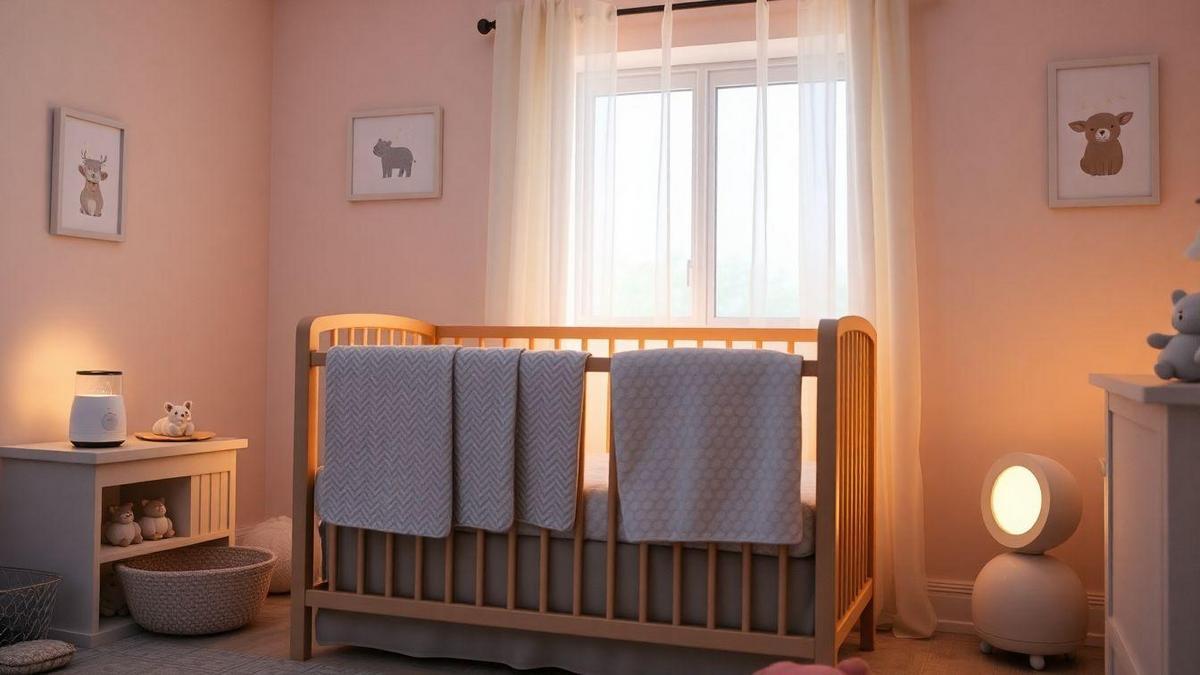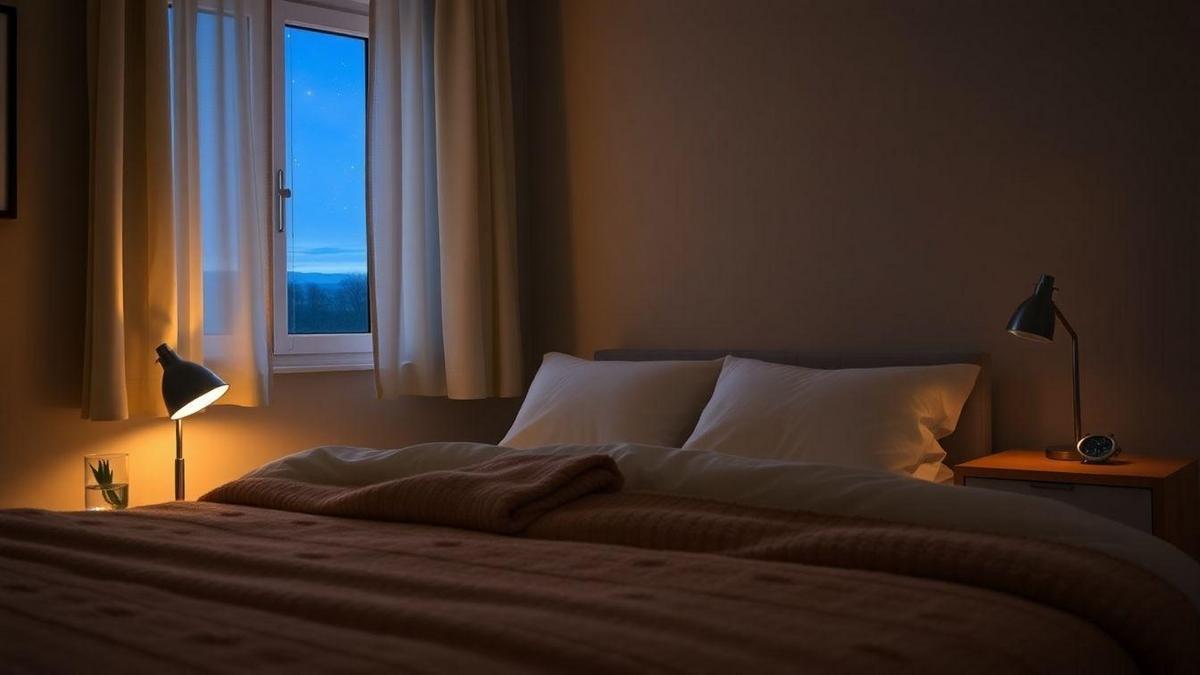When it comes to what really worked to help my baby sleep better, creating a consistent bedtime routine is key. In this article, you’ll learn effective baby sleep techniques, the impact of sleep associations, and how responsive parenting can make a difference. We’ll explore tips for a calming sleep environment and various sleep training methods. Whether you’re juggling sleepless nights or searching for new strategies, you’ll find useful insights that fit your family’s needs. Let’s dive into the world of baby sleep!
Key Insights
- Create a calm bedtime routine.
- Keep the room dark and quiet.
- Use white noise to soothe your baby.
- Lay your baby down when drowsy, not fully asleep.
- Be consistent with sleep times every day.

Understanding Baby Sleep Techniques
The Importance of Consistent Bedtime Routines
When it comes to helping your baby sleep, consistency is key. A regular bedtime routine signals to your little one that it’s time to wind down. Think of it like a cozy blanket that wraps around them, letting them know that sleep is on the horizon.
Start with simple steps like:
- Bath time: A warm bath can help relax your baby.
- Storytime: Reading a short book creates a calm atmosphere.
- Lullabies: Soft music or singing can soothe your baby to sleep.
By following the same pattern each night, you help your baby understand what to expect. This can lead to better sleep and fewer bedtime battles. For more on establishing a healthy routine, check out how to establish a healthy routine for your baby.
How Sleep Associations Affect Your Baby
Sleep associations are the things your baby connects with sleep. For instance, if your baby always falls asleep while nursing or rocking, they may struggle to sleep without those cues. It’s like training wheels on a bike; they help at first, but eventually, your little one needs to ride on their own.
To help your baby develop healthy sleep habits, consider these tips:
- Gradual Changes: Slowly reduce the sleep associations. If they rely on you rocking them, start by rocking less each night.
- Self-Soothing: Encourage your baby to learn how to fall asleep independently. This might mean letting them fuss for a few minutes before intervening.
- Positive Reinforcement: Praise your baby when they fall asleep on their own. It’s like giving them a high-five for a job well done!
Tips for Creating a Calming Sleep Environment
A peaceful sleep environment can make a world of difference. Here are some ways to set the stage for a good night’s sleep:
| Tip | Description |
|---|---|
| Dim Lights | Keep the room dark to signal bedtime. |
| Comfortable Temperature | A cool room (around 68°F) can help your baby sleep better. |
| White Noise | Gentle sounds can drown out sudden noises. |
| Safe Sleep Space | Always place your baby on their back in a crib or bassinet. |
By creating a calming atmosphere, you’re helping your baby feel secure and ready for sleep. For more tips on creating a baby-safe environment, visit how to create a baby-safe environment at home.
Exploring Effective Sleep Training Methods
Different Approaches to Sleep Training
When it comes to helping your little one sleep better, there are several methods you can try. Each approach has its own flavor, so you can find what fits your family best. Here are a few popular ones:
- Cry It Out: This method involves letting your baby cry for a set amount of time before comforting them. It can be tough, but many parents find it effective.
- Ferber Method: Similar to Cry It Out, but you check on your baby at increasing intervals. This can help ease your worries while still teaching your baby to self-soothe.
- No Tears Method: This gentle approach involves comforting your baby without letting them cry. It may take longer, but it feels less stressful for both you and your baby.
- Chair Method: You sit in a chair next to your baby’s crib, gradually moving further away each night until they can fall asleep on their own.
Benefits of Gradual Sleep Training
Gradual sleep training can be a game-changer for many families. Here’s why you might want to consider this approach:
- Less Stress: You and your baby can ease into the process. This can make bedtime feel calmer and more peaceful.
- Builds Trust: Your little one learns that you’re there for them, which can strengthen your bond.
- More Adaptable: If your baby has a rough night, you can adjust your approach without feeling like you’re starting from scratch.
Choosing the Right Method for Your Family
Finding the right sleep training method is like picking the perfect pair of shoes. It needs to fit just right! Here are some tips to help you decide:
| Method | Best For | Considerations |
|---|---|---|
| Cry It Out | Parents who want quick results | Can be emotionally tough |
| Ferber Method | Parents who want a balance | Requires timing and consistency |
| No Tears Method | Parents who prefer gentle approaches | Takes longer to see results |
| Chair Method | Parents who want a gradual transition | Requires patience and commitment |
Think about your family’s needs and your baby’s temperament. Remember, there’s no one-size-fits-all solution. What really worked to help your baby sleep better for one family might not work for yours.

Responsive Parenting and Its Impact on Sleep
How Responsive Parenting Supports Sleep
Responsive parenting is all about tuning in to your baby’s needs. When you respond quickly to their cries or fussing, it helps your little one feel safe and secure. This sense of security can lead to better sleep. Babies who know their parents will come when they call are more likely to relax and drift off to dreamland.
Think of it this way: when you’re in a new place and feel scared, you want someone you trust nearby. Your baby feels the same way. By being there for them, you’re laying the groundwork for peaceful sleep.
Recognizing Your Baby’s Sleep Cues
Every baby has their own signs that they’re ready to sleep. Here are some common sleep cues to watch for:
- Yawning
- Rubbing eyes
- Fidgeting or fussing
- Staring blankly
When you spot these signs, it’s a good idea to start the bedtime routine. This helps your baby know that sleep is coming. The sooner you respond to these cues, the smoother bedtime will be! For more on reading your baby’s sleep cues, refer to how to read your baby’s sleep cues and avoid overtiredness.
Balancing Responsiveness and Independence
Finding the right balance between being responsive and encouraging independence can feel like walking a tightrope. You want your baby to feel supported, but also to learn how to soothe themselves. Here’s how you can strike that balance:
| Tip | Description |
|---|---|
| Start Small | Begin by letting your baby try to settle themselves for a few minutes before you step in. |
| Gradual Steps | Slowly increase the time you wait before responding to their cries. |
| Encourage Self-Soothing | If your baby is calm but awake, give them a chance to fall asleep on their own. |
This approach can help your baby learn to sleep better while still knowing you’re there for them. You’re building their confidence while also being their safety net.
Soothing Strategies for Babies to Sleep Better
Techniques to Calm Your Baby Before Bed
Getting your little one to sleep can sometimes feel like trying to catch smoke with your bare hands. But don’t worry! There are some simple techniques you can try to help calm your baby before bedtime. Here are a few that have really worked to help my baby sleep better:
- Create a Bedtime Routine: Babies thrive on routine. A consistent bedtime ritual, like a warm bath followed by a lullaby, can signal that it’s time to wind down.
- Gentle Rocking: Sometimes, a little sway can do wonders. Hold your baby close and gently rock them back and forth. It’s soothing and mimics the comfort of being in the womb.
- Dim the Lights: Soft lighting can create a calm atmosphere. Try dimming the lights an hour before bedtime to help your baby relax.
- Skin-to-Skin Contact: This can help your baby feel secure. Just cuddle up with them and let the warmth of your skin do the talking.
The Role of White Noise and Music
White noise and soft music can be great allies in your quest for better sleep. They create a cozy sound environment that can help drown out other noises. Here’s how they can help:
- White Noise: This steady sound can mimic the whooshing noises your baby heard in the womb. It can mask sudden noises that might wake your baby.
- Lullabies and Soft Music: Gentle tunes can calm your baby’s mind. You can even sing to them! Your voice is a powerful tool for comfort.
Finding What Works Best for Your Baby
Every baby is different, and what works for one might not work for another. Here’s a little table to help you explore your options:
| Strategy | Pros | Cons |
|---|---|---|
| White Noise | Masks outside sounds | Can be too loud for some |
| Soft Music | Calming and soothing | May not work for all babies |
| Bedtime Routine | Creates comfort and predictability | Takes time to establish |
| Gentle Rocking | Mimics womb experience | Can be tiring for parents |
Try out different techniques and see what helps your baby sleep better. Keep track of what works and what doesn’t. You might be surprised by what brings sweet dreams! For more insights, check out a simple method that calmed my baby in 2 minutes.

Optimizing the Sleep Environment for Better Sleep
Key Elements of a Sleep-Friendly Room
Creating a sleep-friendly room is like crafting a cozy nest. You want it to feel safe and inviting. Here are some key elements to consider:
- Comfortable Mattress: Your mattress should support you well. If it’s too soft or too firm, it might mess with your sleep.
- Soft Bedding: Choose soft sheets and blankets that feel good against your skin. This can make a big difference.
- Dark Curtains: Light can sneak in and disturb your sleep. Thick, dark curtains can block out that pesky morning sun.
- Quiet Space: If noise bothers you, think about soundproofing or using a white noise machine. This can help drown out distractions.
The Effect of Light and Temperature on Sleep
Light and temperature play a huge role in how well you sleep. Think of your room as a stage for a perfect sleep show!
- Light: Your body loves darkness when it’s time to snooze. Try to keep your room dark at night. You can use blackout curtains or an eye mask to help.
- Temperature: A cool room is often best for sleep. Aim for around 60-67°F (15-19°C). If it’s too hot or too cold, you might toss and turn all night.
| Element | Ideal Condition |
|---|---|
| Light | Dark, no distractions |
| Temperature | 60-67°F (15-19°C) |
Making Adjustments for Improved Sleep Patterns
Now that you know the key elements, it’s time to make some adjustments. Here’s how you can tweak your environment for better sleep:
- Declutter Your Space: A messy room can make your mind race. Keep it tidy!
- Create a Sleep Routine: Go to bed and wake up at the same time every day. This helps your body know when it’s time to sleep.
- Limit Screen Time: Put down your phone or tablet at least an hour before bed. The blue light can trick your brain into thinking it’s still daytime.
These small changes can lead to big results. You might find that you really worked to help your baby sleep better!
Parental Sleep Support: Helping You and Your Baby
The Importance of Self-Care for Parents
As a parent, you might feel like you’re always on the go, juggling a million things at once. But let’s get real for a moment—self-care is not a luxury; it’s a necessity. When you take care of yourself, you’re better equipped to take care of your little one. Think of it like putting on your own oxygen mask first before helping others. If you’re running low on energy, it’s tough to be the best version of yourself for your baby.
Tips for Managing Your Own Sleep Needs
Getting enough sleep can feel like a distant dream, especially with a newborn. Here are some simple tips to help you catch those much-needed Z’s:
- Create a Sleep Schedule: Try to go to bed and wake up at the same time each day. This helps your body get into a rhythm.
- Naps are Your Friend: If your baby naps, take that time to rest too. Even a short nap can be refreshing.
- Limit Caffeine: It might be tempting to drink that extra cup of coffee, but too much caffeine can mess with your sleep.
- Wind Down: Create a calming bedtime routine. Whether it’s reading a book or taking a warm bath, find what helps you relax.
- Share the Load: If you have a partner, take turns handling nighttime duties. This way, both of you can get some sleep.
Here’s a quick table to help you visualize these tips:
| Tip | How It Helps |
|---|---|
| Create a Sleep Schedule | Helps your body find a rhythm |
| Naps | Recharges your energy |
| Limit Caffeine | Improves sleep quality |
| Wind Down | Signals your body it’s bedtime |
| Share the Load | Ensures both parents get rest |
Building a Support System for Better Sleep
Don’t go it alone! Building a support system can make a world of difference. Talk to friends and family who can lend a hand. Maybe they can babysit for a few hours or just check in to see how you’re doing. Also, consider joining a local parenting group or an online forum. Sharing experiences with others can lighten the load and provide useful tips.
Remember, you’re not alone in this journey. Many parents are navigating the same challenges. Sharing your struggles and successes can help you feel more connected and less overwhelmed.
Conclusion
In the whirlwind of parenthood, helping your baby sleep better can feel like a monumental task. But with a consistent bedtime routine, a calming environment, and a sprinkle of responsive parenting, you’re well on your way to sweet dreams for both you and your little one. Remember, it’s all about finding what works best for your family. Each baby is unique, and what may be a home run for one might not quite hit the mark for another.
As you embark on this journey, keep your chin up! Patience and persistence are your best friends. So, take a deep breath, trust your instincts, and don’t hesitate to reach out for support when needed.
And if you’re hungry for more tips and insights, be sure to check out more articles on Mamma Diaries. Happy parenting!



